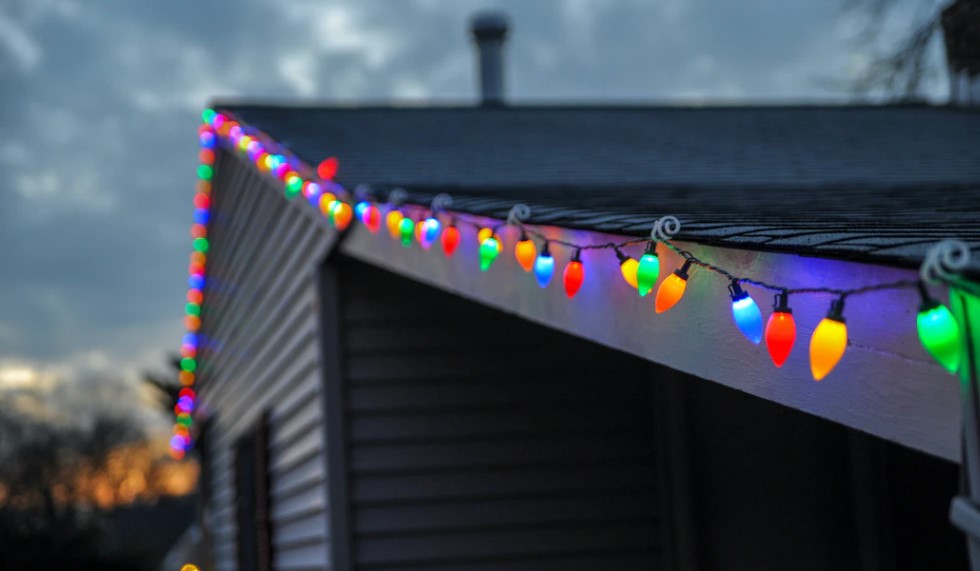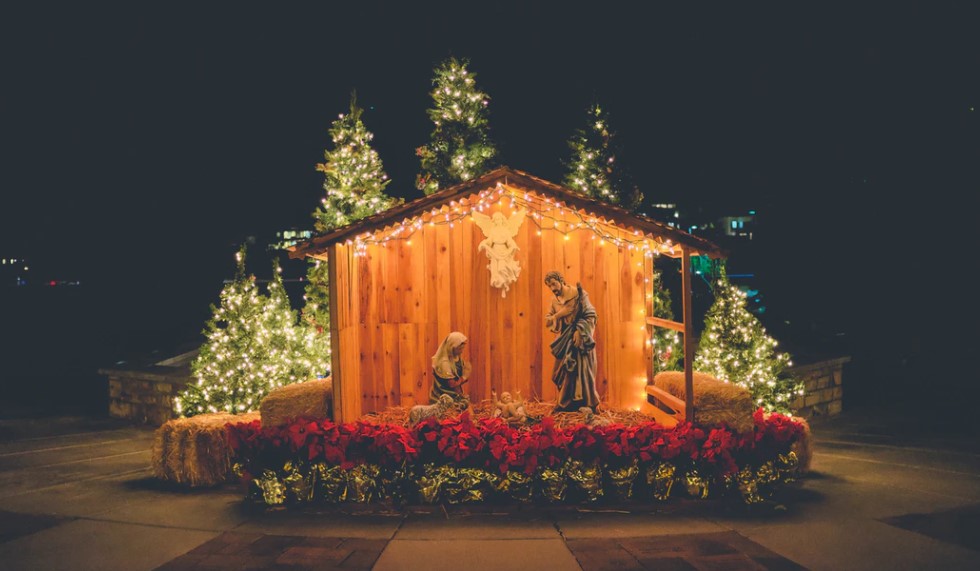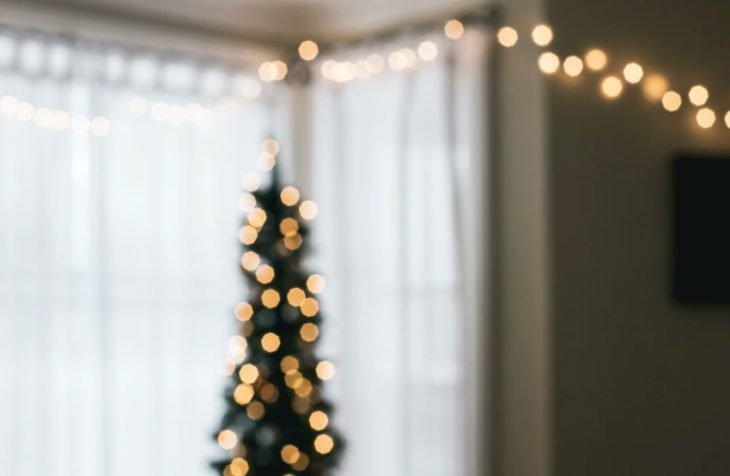Christmas Lights: Your Comprehensive Troubleshooting and How to Guide
With Christmas just around the corner, it may be time to assess your decorations and see which ones need replacement. And what is the most head racking Christmas décor item to deal with? Christmas lights. They can make you throw in the towel and decide not to do any Christmas decorations.
Especially if they are tangled, and you are tired of buying a new set of Christmas lights every other year. This will not be the case if you store them properly. And if you knew how to fix the nuance issues such as a blown fuse or blinking lights. Keep reading to learn how to store, hand, and troubleshoot Christmas light problems.
How to put Christmas lights on a large outdoor tree
To ensure you cover your tree in enough lights, you need to measure the tree trunk’s circumference and the circumference of the branches you wish to wrap in lights. Then determine the spacing between the lights. The most commonly used Christmas lights have 6″ mini bulbs with an average of 2-3″ between them.
Divide the height by the spacing and multiply by total circumference to calculate the full length of Christmas light you need to cover the entire tree.
Calculations example;
Tree length – 4 feet
Circumference – 22 feet
Branch length – 3 feet
Branch circumference – 6 inches
Spacing – 3 inches
Trunk light total length = 4’/3” =16*2’=32’
Branch light total length = 3’/3” =12*6” =6’ * 4 branches
Total length will be 32′ for the trunk and 24′ for the branches = 56.’
How to put Christmas lights on a Christmas tree correctly.
- Start wrapping the tree from the base of the tree. The male plug should be at the base of the tree for electricity connection.
- Wrap the tree with the spacing of choice in mind
- Connect the end of the first light to the female plug to the male plug of the next light
- Ensure you wrap the lights securely to prevent unraveling.

How to make Christmas lights blink/twinkle
Most Christmas lights come with one light marked X in red that is supposed to cause them to twinkle. All you have to do is replace one of the lights with the red-tipped flasher bulb, and your Christmas lights will blink or twinkle.
How to hang Christmas lights on brick
Apply hot glue to the back of each light and press it lightly onto the brick. Hold for at least 10 seconds or until the glue adheres to the bulb onto the brick. Ensure you have enough lights to cover the entire brick wall you want to decorate. And you can connect the lights to the power outlet before you start sticking the lights to the wall.
How to test Christmas lights
To check if your lights are working, plug them in indoors to ensure they all light up. It would be a catastrophe if you were to hang up all your lights outdoors only for them, not light up. If some bulbs are not working, use the steps mentioned above for finding bad bulbs and fix accordingly.
How to change the fuse in Christmas lights
Always make sure your lights are unplugged before you start working on them. Then use a screwdriver to unscrew the fuse holder cap. The fuse is blown if there is a metallic or dark smear inside the glass. Remove the damaged fuse from the fuse socket and replace it with a new fuse.
Check this too: How to Hang Christmas Lights Outdoors Without Nails
Do not use too much force when removing the fuse to avoid damaging the fuse socket. Make sure the new fuse is securely in place before closing the fuse cover. Then screw it back in place using a screwdriver. You can then plug the lights to see if they work.
How many lights do I need for my Christmas tree?
This depends on your preference; as a rule of thumb, budget for at least 100 lights for a 1.5-meter tree. You can double or triple the amount of Christmas lights if you like a fully covered tree.
How to hang Christmas lights on a roof without gutters
Do not staple, nail, or screw any light attaching hardware on your roof. This can lead to future leakage of rainwater into your house in the future. Buy plastic clips to attach the lights onto your roof. You can invest in all-in-one clips that can be used on eaves or metal roofs. Or you can buy clay tile roof tiles, eaves clips, parrot clips, or clips for attaching lights to the roof ridge.
How to shorten Christmas lights
There are two ways to shorten Christmas lights;
Tie them
You can use zip ties to tie together the end of the too-long lights not needed for decoration. This will only make the light shorted, but they will still light up while in a bunch.
Cut them
The other option is to cut off the excess bulbs that you do not need using wire cutters. Use wire connectors to cap off the wire ends that are left exposed once you cut off the extra wire bulbs and twist the two wires together.
How to hang Christmas lights around windows
Items needed:
- Ladder
- Mounting hardware (depending on mounting surface)
- Outlet or extension cord
- Lights
Mount the hooks or clips you will use to hold the Christmas lights up around the window. Then proceed to attach the lights and plug them in. you can use adhesive light clips if you cannot use mounting hardware on your window frame. Alternatively, you can hang the lights inside your windows if you do not want to undertake any outdoor lights installation project.
How to power outdoor Christmas lights
There are two main ways to power your Christmas lights;
Using an extension cord
This entails passing an extension cord plugged into an outlet indoors through a door or window. The main disadvantage is that cold air will be getting into your house, especially if you have harsh winters. Alternatively, you can drill a hole in the wall to pass the extension cable.
First, you need to remove the extension cord plug to pass the wire through the wall, then assemble the plug so you can plug it into the outlet. The plug goes on the inside while the connection points are to be outside your house.
This means you have to pass the wire from outdoors into the house as it is much more complicated to disassemble the connection points. If you have to use more than one extension cord, use a weatherproof outdoor Dribox to keep the electrical connection pints safe and dry.

Using an outdoor power outlet
If you already have an outdoor power outlet, all you have to do is use an adapter if the voltage does not match the outlet. If you do not have an outlet, you can install one instead of routing an extension cable through the wall, window, or door.
You will need to invest in an RCD outdoor wall socket kit. The socket is designed to be weatherproof ad can withstand harsh weather conditions. It is also easy to install and connect to your house’s electrical supply. Drill a 10mm hole in the wall and make sure you do not drill any existing electrical cables.
Then pass the wire through and connect it in to an indoor electrical outlet. Then proceed to wire the RCD and fix it onto the wall. If in doubt, hire an electrician to install the kit for you. It is better to be safe than sorry when it comes to electrical wiring jobs.
The key issue when it comes to outdoor Christmas lights is the safety element. You need to ensure that your electrical wiring does not come into contact with snow, as this may lead to electrocution when the snow melts. It may also cause your entire electrical system to trip.
Here are some safety tips to help you stay safe as you decorate your house for Christmas;
- Use extensions designed for use outdoors as they are waterproof.
- Inspect all decorations and extensions before using them
- Make sure the extension cords have the required voltage for powering your decorations.
- Try to install your extensions in elevated or protected zones so they do not come into contact with any water or snow.
- Do not overload the extensions or electrical outlets.
- Use low wattage bulbs (at most 7 watts) to reduce overheating risk, causing a fire, especially if you have a tone of decorations.
- Protect all your plugs using a ground-fault circuit interrupter (GFCI)
- Turn off your lights when you go to sleep or when you go out.
- Lastly, do not use nails, tacks, or staples to install your lights.
